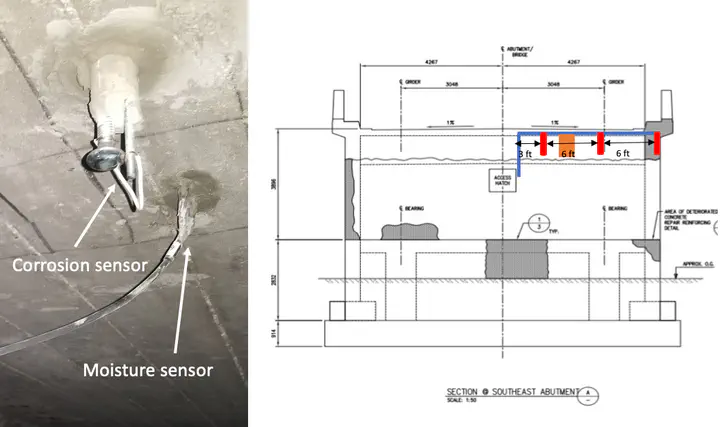Petrofka bridge chloride-induced corrosion assessment

The Petrofka Bridge, a critical steel and concrete crossing over the North Saskatchewan River, exhibited signs of progressive deterioration, prompting a need for a more advanced structural assessment to guide its upcoming major rehabilitation. Our team delivered a consulting-led investigation focused on long-term durability risks and performance forecasting.
Engineering Contributions:
Embedded Sensor Deployment:
Corrosion and moisture sensors were strategically installed within the bridge deck to enable year-round monitoring of internal moisture dynamics and reinforcement corrosion rates at multiple depths. This real-time sensing program began in July 2020 and provided a valuable dataset for evaluating in-situ deterioration processes.Probabilistic Chloride Ingress Modelling:
Using site-specific data and mechanistic transport models, we developed a probabilistic framework to estimate the risk and timeline for chloride-induced corrosion. Forecasts indicated that by 2030, approximately 30% of rebars would exceed critical chloride thresholds, triggering active corrosion.Model Calibration and Data Integration:
Model outputs were refined through calibration with chloride concentration profiles obtained from a parallel 2020 regional study. This step enhanced prediction accuracy and aligned assessment outcomes with observed environmental exposure conditions.
Outcome:
Our integrated use of sensor technology and risk-based modelling helped the client identify optimal intervention timing and reduce uncertainty in maintenance decision-making.
This project demonstrates the value of data-informed consulting approaches to infrastructure rehabilitation, offering long-term performance insights and targeted investment strategies.